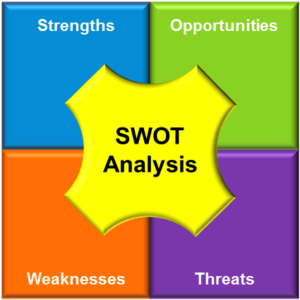When clients call your agency, chances are, they’re hurting:
 Maybe they’ve been running things themselves, but have realized that running marketing campaigns today, including the use of automated platforms and sophisticated multi-channel strategies, is just plain out of their league and they’ve turned to you for help
Maybe they’ve been running things themselves, but have realized that running marketing campaigns today, including the use of automated platforms and sophisticated multi-channel strategies, is just plain out of their league and they’ve turned to you for help- Or maybe they lack the resources to implement and execute marketing automation
- Or maybe they have a strong marketing team, but the architecture, cadence, messaging strategies, and/or segmentation of contacts are new territory
- Or maybe they’re already clients, and your agency has helped them gain visibility in the digital space and viability in today’s high-tech, competitive marketplace – you’ve done right by them, and now they want more
Here’s what they all have in common – each could benefit from a gap analysis.
GAP ANALYSIS
Many organizations lack a comprehensive understanding of the gaps in their marketing performance. A gap analysis can help them diagnose and understand what’s working, what’s not working, and what it’ll take to get where they want to be.
By analyzing the right data effectively and acting on the findings, you can add real value and develop best-in-class marketing strategies and plans for each of your clients.
What It Is
By using analytics, benchmarking, and other measurements, you can uncover areas that aren’t being covered, or that aren’t performing as well as they could.
Why It Matters
When a client opts in for a gap analysis, the return on their investment will start to manifest itself pretty quickly.  Once the major holes in their marketing plans become apparent, you’ll be able to remedy those and start attracting, capturing, and nurturing more leads, and passing along better-qualified leads to sales.
Once the major holes in their marketing plans become apparent, you’ll be able to remedy those and start attracting, capturing, and nurturing more leads, and passing along better-qualified leads to sales.
The gap analysis will help you cover all possible bases so you can use a full spectrum of techniques and tools to run a variety of well-balanced, robust, successful marketing campaigns that raise the bottom line. And, when your clients are happy with the results, they might just stick around for more – with customer retention being yet another benefit to you.
What Causes Gaps
Generally speaking, a gap can exist when there’s an emphasis on some portion of the traditional marketing mix (people, physical evidence, place, price, process, product, and promotion = the “7 Ps”) while other elements are being neglected. Additionally, gaps can be present when:
- Potential customers aren’t being targeted
- Competitors’ claims aren’t being addressed
- Multiple platforms aren’t being leveraged
- A whole host of other reasons
To sum it up simply: if something can and should be happening – and it isn’t – there’s a gap.
How to Perform a Gap Analysis
To close gaps, use a tactical approach. Start by talking to your clients, figure out where the gaps are and create specific tactics to tackle each issue.
Ask Questions and Take Lots of Notes
Your clients will tell you everything you need to know – it’s just a matter of steering the conversation and paying close attention to their answers (i.e. pain points) to learn what’s broken and what can be fixed.
The first questions to ask will concern their audience and the typical buy-cycles:
- How many contacts do you have?
- Out of those contacts, how many are current customers?
- How often do your existing customers repeat purchase?
Find Out If They’re Content with Their Content
Once you’ve gained more information about their audience, move the topic to content – the one thing pretty much every customer needs:
- How much content do you currently produce?
- What kind of content is it?
- How do you produce it?
- Does the content appeal to your desired audience?
There are often huge gaps in people’s content marketing programs. Identifying what’s missing in terms of messaging for the right audience, at all stages, generating quality content, having strategies to communicate those messages and enabling full programs to drive new leads – as well as nurture for retention – are all part of filling those gaps.
Making the mistake of skipping content marketing altogether, or not having a content/messaging strategy in place before campaigns are launched, are often the cause of those gaps. Since content can be used to get results throughout the entire customer lifecycle, it’s an essential component in today’s marketing environment.
Wait, Tactics Should Be Guided by Strategies?
Take stock of the tactics the client is using now, then pull back and take a look at the overarching strategy behind those tactics. If there is no strategy, that may very well be a good place to start.
Analyze This!
Some of the ways you can use the analytics tools in your automated lead-to-revenue platform to identify the gaps in your sales include:
 Set up a comparative analysis of products/services your client is selling (and not selling).
Set up a comparative analysis of products/services your client is selling (and not selling).- Perform a SWOT analysis to compare how your client’s company is performing against their competitors
- Research current and upcoming offerings of competitors to see how your clients can and will perform against them
- Discuss and examine whatever you or your clients want to measure, compare, or fix
Remember, your assessment of the current status versus the potential of your clients’ marketing performance can be both qualitative and quantitative.
Let the Numbers Do the Talking
At first, your clients may not understand or appreciate the value of the various tactics you’re recommending to close the gaps in their marketing, nor the importance of having a strategy and goals to drive every activity. No problem. Use business intelligence such as analytics, benchmarking and reports to show them what is and isn’t working, to help explain where they can improve, and how you can help in each area.
For example, by reviewing content from previous campaigns and those campaign results, you can build a better strategy around offers and messaging based on what you know has worked. A/B testing subject lines (or buttons, or calls to action, or …) is a small but mighty tool that can affect the outcome of your clients’ automated campaigns to a surprising degree.
 Help Them Experience a “Lightbulb” Moment
Help Them Experience a “Lightbulb” Moment
That “aha!” moment… it’s priceless. It’s also a powerful and persuasive way to encourage your clients to realize for themselves that their departments can/should/must be performing better. Help them see the light by asking questions like those above. It’s a great way to nudge the sales process along by disrupting their contentment with the status quo.
Are They Buyin’?
Now it’s time to get their buy-in that your agency is the solution they need to close the gaps. Once you’ve mutually agreed that there’s a gap between where they are and where they’d like to be, explain that performing a gap analysis will empower their team and yours with insight into:
- How things are running now,
- Where the holes are in their marketing strategies and programs (there can be gaps in each); and
- How you can fix things so they can achieve their goals
Caveats
No advice column would be complete without a few “Watch out for this!” tips:
- After performing the gap analysis, it’s time to take action, but your clients may not understand or appreciate the importance of having a strategy and goals to drive every activity to close the gaps. Educate them about how and why you want to take specific actions, and help them see the value of each tactic your agency will be employing on their behalf.
- There’s no point in setting anyone up for failure. Before creating and adopting plans to fill the gaps you’ve identified, make sure your clients have realistic, achievable goals.
- Manage expectations up front. Experienced marketers know that seeing ROI from campaigns takes some time. Implementing on one tactic, driven by a well-conceived strategy, will produce different results than launching multiple tactics simultaneously. Make sure they know that and discuss their options with them before diving in.
Now What?
You’ve analyzed the gaps, so now it’s time to grab your virtual shovel and repair the holes. To get the job done, you’ll primarily be modifying the 7 Ps of the marketing mix – implementing and experimenting with tactics to close the gaps.
For example, you might notice that sales of a particular product fall way below those for the rest. Creating a properly targeted promotional campaign through a variety of channels can quickly have a positive impact and increase sales. The solutions will vary depending on the nature of the business and the goals of the organization. (While this example is very simple, this approach can be quite extensive and complex, depending on how deep you want your analysis to go.)
Just like any strategic plan, once you’ve acted on a solution, you’ll want to measure the results to see how it’s working. Start by deciding how you’ll judge the gap over time – by sales, profit, engagement levels, retention, etc. Then measure and record the results so you can make adjustments and report your amazing accomplishments to your clients.
Close the Gap on Missed Opportunities
Today’s smart marketers are offering gap analysis to their clients to help them see missed opportunities and identify areas for potential growth. Closing the gaps – with both tactical and strategic components – can increase traffic and the number of qualified leads going to the sales department. Helping clients achieve a tighter alignment between marketing and sales is yet another bonus to help them boost their bottom line and fall even more in love with your agency.

